Jul 01, 2024
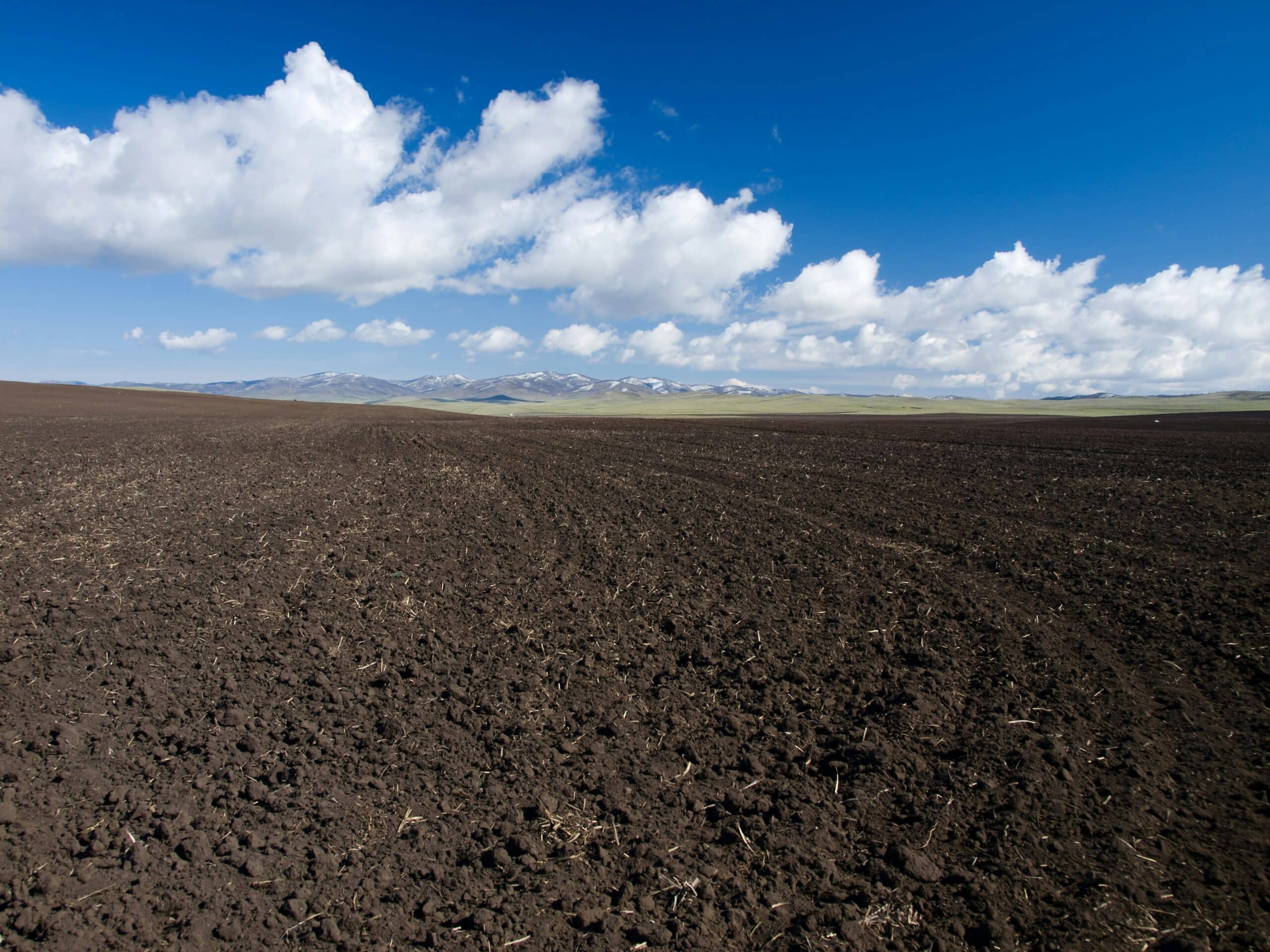
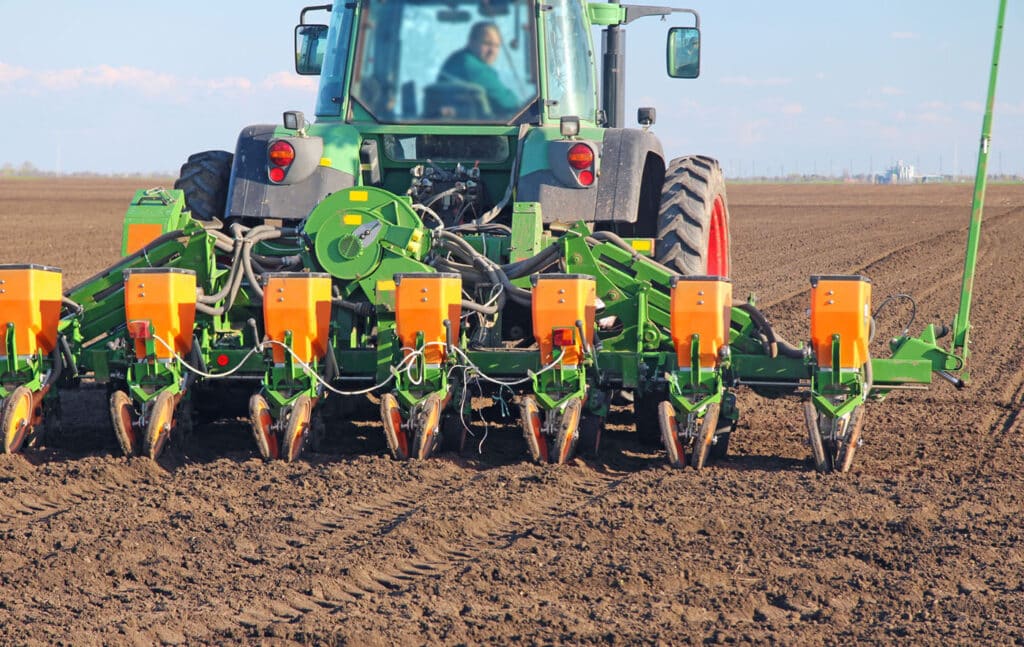
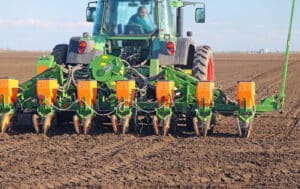
Seed treatments have been around for hundreds of years. Both the ancient Egyptians and Romans used onion sap as a seed treatment. In the mid-1600s, copper, arsenic, and mercury were applied to seeds as a disinfectant and layer of protection. The first fungicide was introduced in 1968.
There’s a reason why growers have been using seed treatments for centuries. Those who don’t use seed treatments almost always, sooner or later, learn why they’re a worthwhile investment.
It doesn’t matter if your crops have never been impacted or killed in the past due to pests, pathogens, or the environment. This year could be the first year disaster strikes. It usually only takes one bad case of seedling disease or cutworms to convince a grower that seed treatments are a worthwhile investment.
Seed treatments are a quintessential “better safe than sorry” investment. No matter what type of seeds you invest in, there are times and situations where even great genetics fall short.
To pick the right seed treatments, it’s important to explore all the variables that could impact your seeds, as well as the options available. From treating with pesticides to preparing the seed bed (also known as the spermosphere), there are many ways growers can create a seed treatment plan that’s “just right” for protecting and supporting their seeds.
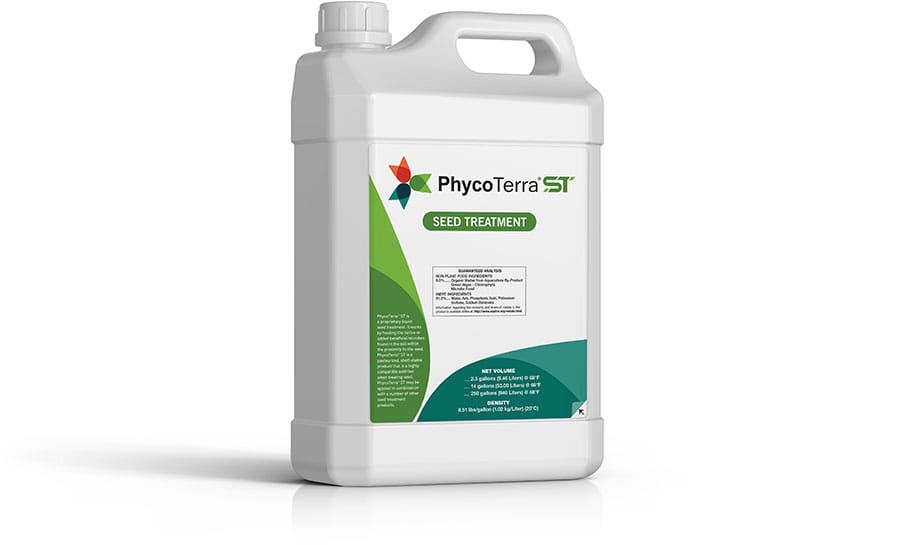
Seed treatments are biological, physical, or chemical materials added to seed prior to planting. These materials can be biological organisms, nutrients, colorants, or chemicals. Each ingredient plays a specific role in the seed’s development and germination. Seed treatments can protect the seed from pests and diseases, support the health of the seed, promote growth, and reduce growing challenges and stressors.
Seed treatments are especially important for seeds with low germination rates (<80%) or low seed vigor. Growers also look to seed treatments to support seeds planted in cold or wet conditions, which can hinder early growth and stand establishment.
Some seed treatment products create a zone of protection around the seed and young plant. Others are systemic and travel within the plant during and after germination to provide protection. Seed treatments break down or dilute within the first six to eight weeks after the seed is sown into the ground.
Yes! Most seed treatments include multiple ingredients and additives. This is because most seed treatments only assist with one specific function.
Fungicides stop harmful fungi. Plant growth regulators promote growth. PhycoTerra® ST feeds the beneficial microbes in the spermosphere – where the seeds have the first interaction with the soil.
Each product has a role in protecting and nourishing the seed in its own specific way. There isn’t one product that covers every single variable a seed could encounter. This is why many growers stack different kinds of seed treatments together to support and protect vulnerable seeds.
To get materials to stick to seeds, growers and seed treaters use a rhizobium-peat mixture, a lime coating, a fungicide, or a combination of these or other solutions to act as a glue to ensure the seed treatment sticks to the seed.
Often, color is also added to indicate that the seed has been treated with pesticides. This deters animals, like birds, from eating the seeds and is a visual sign to growers to not feed the seeds to livestock.
Growers can buy pre-treated seeds, or they can add treatments to their seeds. It’s worthwhile to invest in a decent seed treater if you’re going to treat your own seeds year after year.
Before applying seed treatments, consult an agronomist or crop adviser to ensure each material in your seed treatment plan will “play nicely” together. One or both of these experts will have insights into the compatibility of each seed treatment ingredient.
There’s no guarantee the seeds will make it to a high-yielding crop, there are too many variables once a seed is planted in the ground. Seed treatments are a way to hedge your bets in your favor and to increase your chances for ROI on your seed investment.
Between 20-40% of agriculture production is lost to pests and diseases each year, totaling roughly $220 billion in economic value.
The three biggest threats to seeds include pests, environmental stressors, and diseases.
Pests
Living in a globalized world has allowed the agriculture industry to exchange information, best practices, and seeds. Yet, globalization hasn’t been exclusively a good thing.
Due to globalization, many of the pests below are found across almost every continent. International trade and travel are two likely causes for these common pests making a home of so many fields across the world.
Some of the most destructive pests in North America include:
Those most at risk are no-till or weedy fields because it provides a home and food for pests during the non-growing season.
No crop is truly safe from all pests. Reference the biggest threat to each crop by pest below.
Crop | Common Pests |
Corn | Corn rootworm larva, white grub, soil cutworm, wireworm, seedcorn maggot, southern corn leaf beetle, corn flea beetle, spider mite, stalk borer, western bean cutworm, army worm, corn earworm, corn leaf aphid |
Soybeans | Fall armyworm, beet armyworm, yellow striped armyworm, bean leaf beetle, blister beetle, Japanese beetle, Mexican bean beetle, corn earworm, cutworm, dectes stem borer, grasshopper, green cloverworm, kudzu bug, caterpillar, soybean aphid, slug, snail, soybean looper, spider mite, stink bug, three-cornered alfalfa hopper, thrip |
Wheat | Wheat stem sawfly, brown wheat mite, hessian fly, armyworm, wheat curl mite, wireworm, aphid, stink bug, grasshopper |
Canola | Cabbage worm, armyworm, diamondback moth larva, cutworm, cabbage seedpod weevil, flea beetle, bertha armyworm, lygus bug, diamondback moth |
Cotton | Cutworm, thrip, aphid, plant bug, cotton bollworm, tobacco budworm, spider mite, armyworm, whitefly, European corn borer, cabbage looper, stink bug, boll weevil, mite, aphid, caterpillar |
Peanuts | Thrip, leafhopper, leaf-eating worm, three-cornered alfalfa hopper, corn earworm, tobacco budworm, burrower bug, cornstalk borer, white grub, mite, caterpillar |
Environmental Stressors
The weather has always posed a threat to seeds. Climate change has made it even trickier for seeds to germinate and for young plants to reach maturity. Between widespread droughts or heavy precipitation, late planting windows, and fluctuation or unexpected temperatures, seeds need more support than to simply be placed in the ground unprotected.
Seed treatments can help reduce abiotic stress, support root development and germination, and feed microbes in the spermosphere, giving your crops the best chance to endure whatever environmental stressors may arise.
Diseases
Avoiding diseases is imperative because, once disease strikes, it can be next to impossible to save your seeds. Plus, removing the disease from your fields can be complicated and take years.
Some common diseases include:
Clubroot | Cabbage, cauliflower, broccoli, Brussels sprouts, kohlrabi, kale, radish, turnips, rutabaga, mustard greens, collard greens, arugula, bok choy, canola oil |
Scab | Apple trees, olive trees, pear trees |
Loose smut | Barley and wheat |
Stinking smut | Wheat, bread, durum |
Root rot | All crops |
Tar spot | Wheat, brome, wheat grasses |
Basil downy mildew | Basil |
Ergot | Wheat, barley, rye, oats |
Cucumber mosaic virus | Carrot, celery, cucurbits, legumes, lettuce, onion, pepper, spinach, tomato |
Lettuce mosaic virus | Endive, escarole, lettuce, pea, safflower, spinach |
Tomato mosaic virus | Tomato, pepper, potato, apple, pear, cherry |
Black leg | Cabbage, Brussels sprouts, kohlrabi, radish, rutabaga, white mustard, black mustard, broccoli, cauliflower, kale, turnip, wild radish, Chinese mustard, cress, rutabaga, turnips |
White rot | Onion, garlic, leeks |
These pathogens can be transmitted by water, wind, or via insects. Another way to avoid soil-borne disease is to create disease suppressive soils.
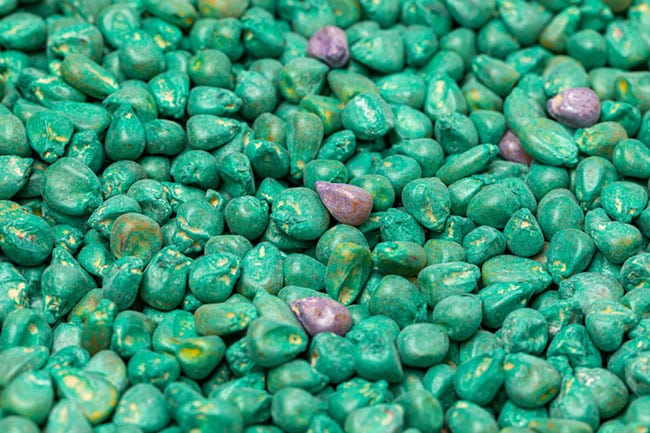
Creating a seed treatment plan is like Goldilocks trying to find the right porridge. Growers should look for a combination that’s “just right” given the variables at their farm. The variables you should consider include:
Work with a trusted crop adviser to come up with the “just right” seed treatment plan for your farm.
There are hundreds of types of seed treatments, but they tend to fall into three main categories. Each category supports seeds in their own unique and specific way.
Fungicides defend seeds against fungal diseases and pathogens, preventing fungal diseases. While there are good fungi in your soil, some fungi cause seedling damping off which can be a major concern, especially for early-planted soybeans.
Some types of fungicides include:
Insecticides protect seeds from below-ground insects, including larvae. Many insects can cause damage to seeds before they have a chance to germinate. Insecticides also provide seedlings with early protection from above-ground insects and larvae, too.
Some common insecticides include:
Applying insecticides as a seed treatment is a common agricultural practice, and is also considered a regenerative agricultural practice. A lower concentration is needed to protect the seed versus a mature plant. The insecticide fully encases the seed and decreases the chances of run-off or leaching.
Additives provide early-season benefits for plant health in certain environmental conditions. These additives include inoculants, flow additives, biostimulants, and nutrients. This category is broader than the other two categories. Supporting the seed can come in many different forms.
Below are four examples:
Microbial inoculants help stimulate plant growth and support soil biodiversity. They can assist with niche situations like supporting nitrogen fixation in legumes, which encourages growth.
Plant growth regulators improve germination and enhance tolerance to stress at the early growth stages. This particular type of seed treatment can be helpful when seeds have to germinate in tough conditions.
Seed enhancements are products with unique attributes to help make seeds more usable, and, in some cases, are required by law. Enhancement includes dyes or colorants, flowability agents, polishing agents, and coatings.
Fertilizers promote plant growth. They can enhance fertilizer performance or supply micronutrients to enrich the growth environment for the seed.
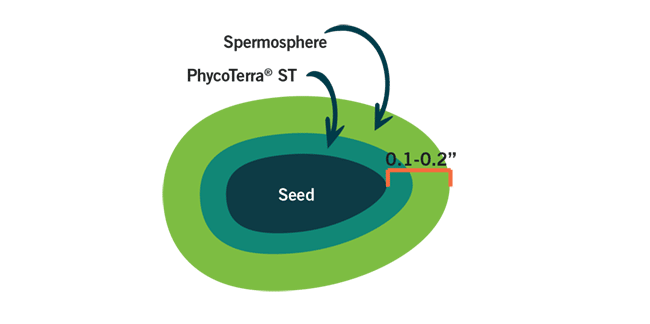
The seed naturally secretes enzymes and metabolites providing beneficial microbes with a carbon source, but it’s not enough to activate all the surrounding beneficial microbes. It’s a good idea for growers to invest in an additional carbon product, like PhycoTerra® ST, to feed hungry soil microbes.
This award-winning seed treatment is one of the only carbon-based seed treatments available to growers. It feeds beneficial microbes in the immediate space surrounding the seed. When microbes are fed the high-quality carbon source, they wake up and get to work. This creates an environment to support germination, early vigor, root-structure development, and crop stand establishment – all to optimize yield potential.
PhycoTerra® ST can easily be added to a grower’s existing seed treatment plan.
Supercharging your spermosphere is the easiest way to give your seed, and beneficial microbial community, a leg up in supporting improved yield.
There are many perks to applying materials directly to the seed. It’s efficient, and little to no product is lost due to indirect application. Plus, a pesticide seed treatment is extra deterrent where you need it most.
Environmentally, the high-concentrated products added in seed treatments are a much smaller amount compared to spraying a field. This leads to less leaching and run-off.
For growers, seed treatments can create improved handling and flowability for both hand and machine handling.
There are four different ways to apply seed treatments, which vary in thickness.
Seed Dressing: A thin layer is applied to the seed, often a pesticide, and possibly some color. The color can help growers discern what’s on the seed.
Seed Coating: A thin film is applied to the seed less than 10% of the mass of the original seed.
Seed Encrusting: Applied materials of the seed treatment make up 100% to 500% of the seed mass, but you can still see the shape.
Seed Pelleting: Applied materials are so thick you cannot see the seed shape at all anymore.
Seed treatments have two main benefits: defense and offense. They either defend your seeds against potential threats, like seed-borne or soil-borne diseases, or they help your seed on offense by giving seeds a healthy boost and improve overall crop performance.
“Defensive” seed treatment protects your seeds from pests and diseases. They improve your seed’s immunity and can deter above-ground and below-ground threats.
“Offensive” seed treatments help achieve uniform germination, including avoiding delayed germination or irregular emergence. Given the pin-point application of seed treatments, they can improve germination across your entire field. They add nutrients and beneficial microorganisms to help the plant grow and improve seed immunity.
The easiest place to start when it comes to seed treatments is considering the history of your farm. What has damaged your yields in the past? What variables have impacted your seeds’ germination rates?
A dry year doesn’t mean water-loving pathogens are gone forever. It also doesn’t mean you can expect a dry fall and winter, with early spring planting. Look for patterns, but prepare for outliers with a likelihood to return.
If you don’t have your farm’s history noted, you can also start with a soil test. Find out what’s living in your soil and what’s dormant, and work with a crop adviser to make a seed treatment plan this spring.
If you’re curious how you can support germination, early vigor, root-structure development, and stand establishment with an innovative seed treatment for your crops this year reach out. Your beneficial microbes, seeds, and future self will thank you!